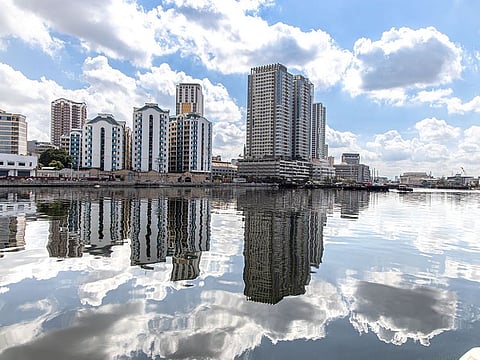Pasig River slowly being nursed to rehabilitation as fishes thrive
Fish being caught are not yet safe for human consumption, panel warns

Manila: Efforts to revive Metro Manila and Laguna’s main waterway, the Pasig River, are making headway if the number of recreational fishers casting their line at the riverbanks is any indication.
In recent days, social media sites have been abuzz with photos of record catches from the river — from tilapia weighing 3kg to catfish with dimensions of a toddler. Big fish have been caught in Santa Ana in Manila and Napindan in Taguig City, Guadalupe in Makati City as well as Manila Bay.
Ordered to be revived in 1999 by then President Joseph Estrada through a directive that created the Pasig River Rehabilitation Commission (PRRC), the Pasig River is gradually being nursed back to life decades after it had been considered “dead” due to pollution.
The industries and commercial districts that lined its banks have now been replaced by parks and malls in some areas.
But casting the line to catch something for the dinner table from the Pasig River may not yet be a safe option according to the PRRC.
George dela Rama, spokesperson of the PRRC, fish caught from the river, despite their safe appearance and huge dimensions, are not safe for human consumption.
He said these river dwellers basically subsist on effluent thrown by people living along the length of the waterway and some of these include human waste.
“The effects of eating fish that feed on these wastes are not immediate, exposure to these contaminants may lead to certain illnesses” he said.
Dela Rama said PRRC conducted tissue analyses on fish caught at the Pasig River like the tilapia, banak (sea mullet), bugaong (silver grunt) and kanduli (Manila sea catfish). After five months of the study, experts said samples contain high concentrations of heavy metals such as lead and mercury as well as high amounts of bacteria from human and animal waste.
“It is not safe to eat fish caught in the Pasig River yet,” he said.
The return of the fish to the rivers on the other hand, means that biodiversity had returned to the waterway and that it is clean enough to sustain certain life forms.
PRRC executive director Jose Antonio Goitia said that while he welcomed the return of marine life to Pasig River as a sign of its resurgence, he reiterated the warning against the ‘deliberate and large consumption’ of fish taken from the waterway.
Pasig River had been central to the development of Metro Manila being the centre of trade and commerce long before the arrival of the Spanish colonisers to the country during the late 1500s.
Sign up for the Daily Briefing
Get the latest news and updates straight to your inbox



